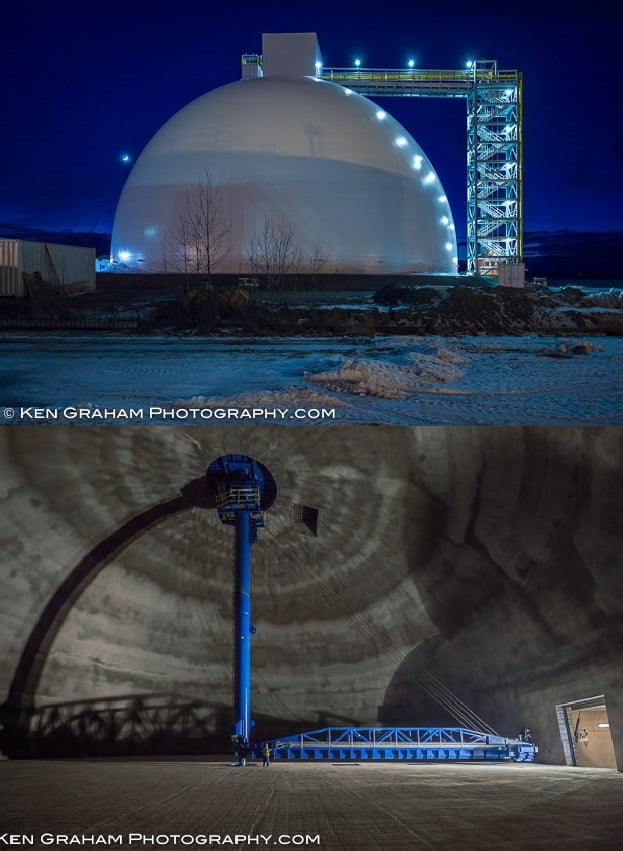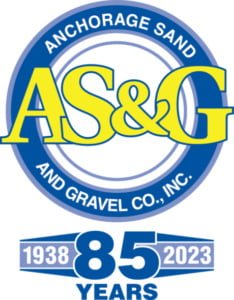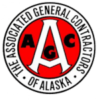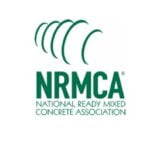
About Us
1938
Company Founded
Arthur “Art” Waldron who came to Alaska as a construction superintendent founded Anchorage Sand & Gravel as a gravel mining and hauling business at Ship Creek in 1938.“Is it the Truth?”This is the first line of Rotary International’s 4-point creed and to any visitor to the office of A. L. Waldron at Anchorage Sand & Gravel Company, it is the first thing he sees, and the more he talks with Mr. Waldron, the more certain it is that he lives by this creed. Read more about Art Waldron …Back in 1935, Franklin D. Roosevelt’s “New Deal” brought more than 200 families from the drought-ravaged Midwest into the Mat-Su Valley to start a farming community.The First Back Hoe was seen in Anchorage around 1936 being used for the 8th Avenue sewer job.

1940
Call ``Main 122``
In 1940, Alaska’s population was about 75,000 people; 4,000 living in Anchorage. Construction begins on Elmendorf Air Force Base and Fort Richardson, doubling the population in town and boosting the local economy.AS&G built the first ready-mixed concrete plant in the Territory of Alaska, and added concrete block to the business line. The first ‘newsletter’ was sent out – a penny postcard announcing even bigger plans.
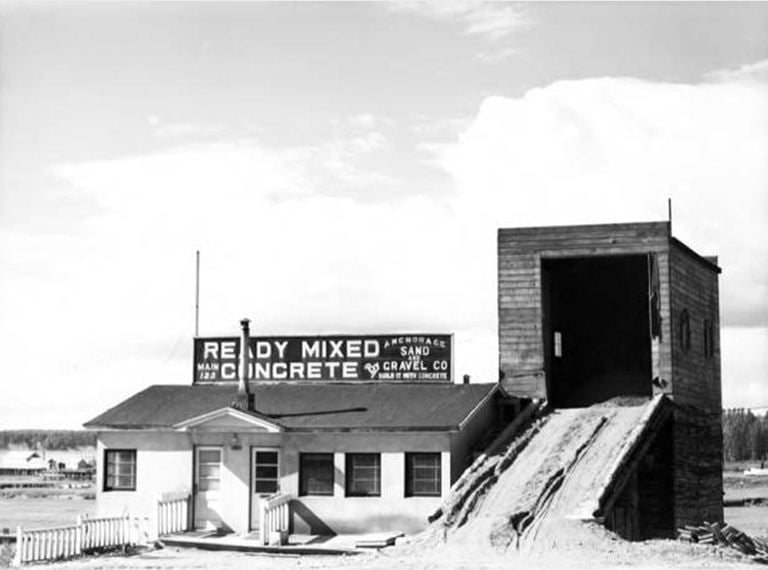
1943
New Equipment
Advocated for by congressional delegate Anthony J. Dimond, the construction of the Alaska Highway (ALCAN) began as a means of defense and an overland supply route in March of 1942, and the Whittier tunnel was completed. Later that year, Japanese troops would invade the Aleutian Islands.By 1943, Alaska’s population had risen to 233,000; of it 152,000 military personnel.
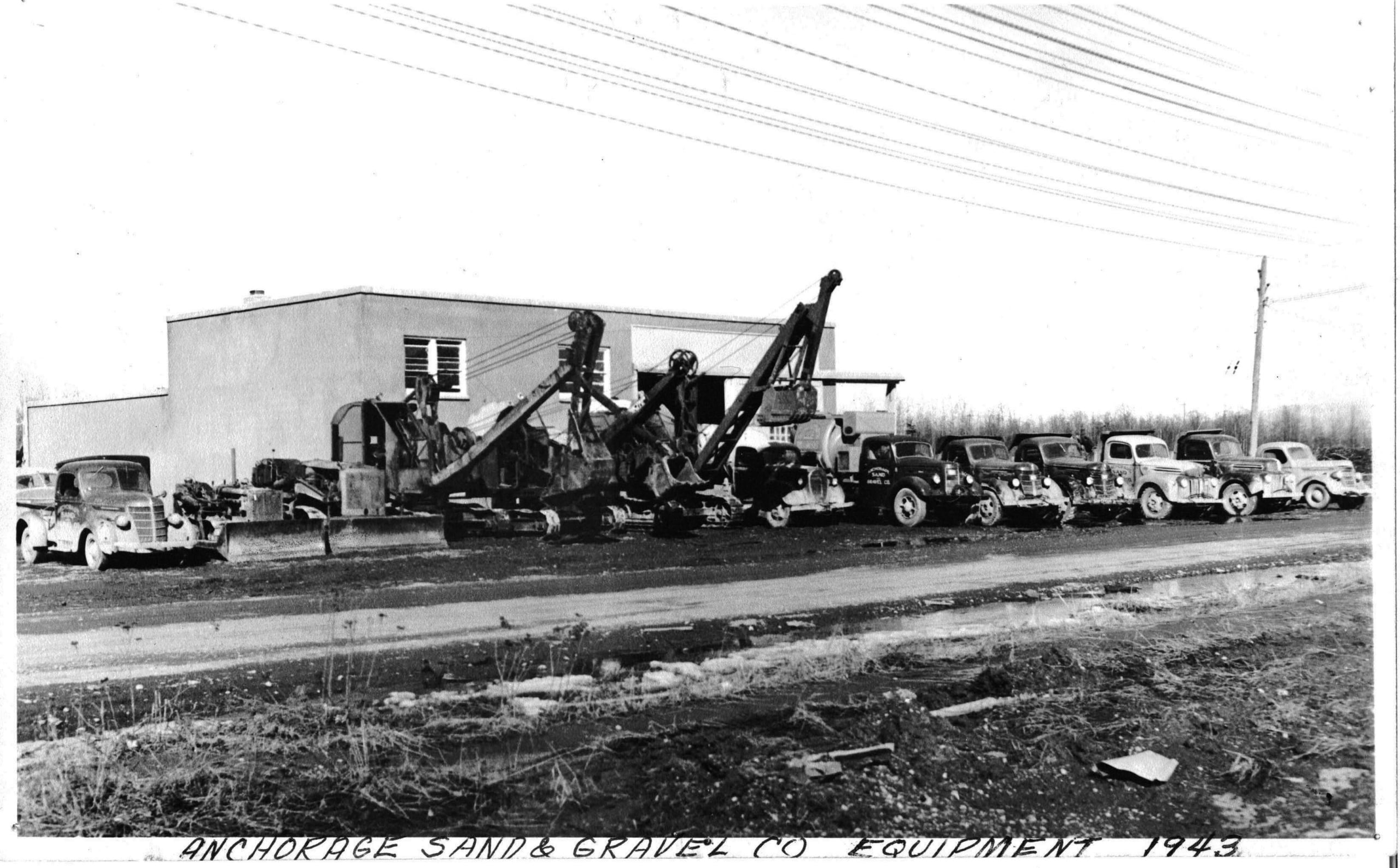
1945
Construction Crew
AS&G Construction Crew in Summer 1945; from left:Theron Handy – Joe Columbus – Del Hosler – Harry Diamond – George Maxwell – Ken Stingle – Bud Fritz – Wayne Abbot – (…) Handy and … the dog.By 1946, Alaska’s population had decreased to 99,000 due to a decline in military activities.
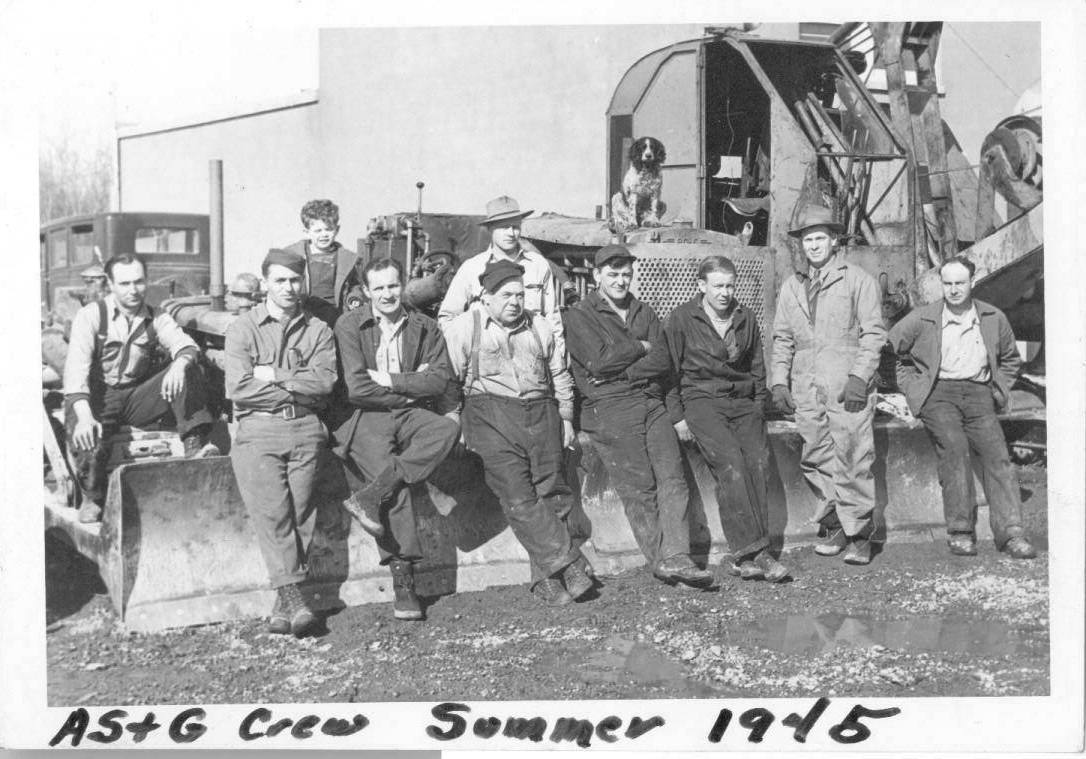
1947
321 Second Avenue
This calendar page of August 1947 comes with a story:Grohne Concrete in Decatur (IL) called one day in 2006 to see if AS&G is still in business. They were in the process of tearing down an old batch plant and found the calendar between the walls. Nobody had any idea how it got there but we received another piece of the history puzzle of AS&G.In 1947, Z. J. Loussac was mayor of Anchorage and ‘Alaska’s premier capitalist’ Austin “Cap” Lathrop opens the 4th Avenue Theater. AS&G’s operations were located at 321 Second Avenue in the Ship Creek area.

1948
Build It With Concrete
AS&G is promoting fire resistant homes build with concrete.This house is now located at 1435 L Street.
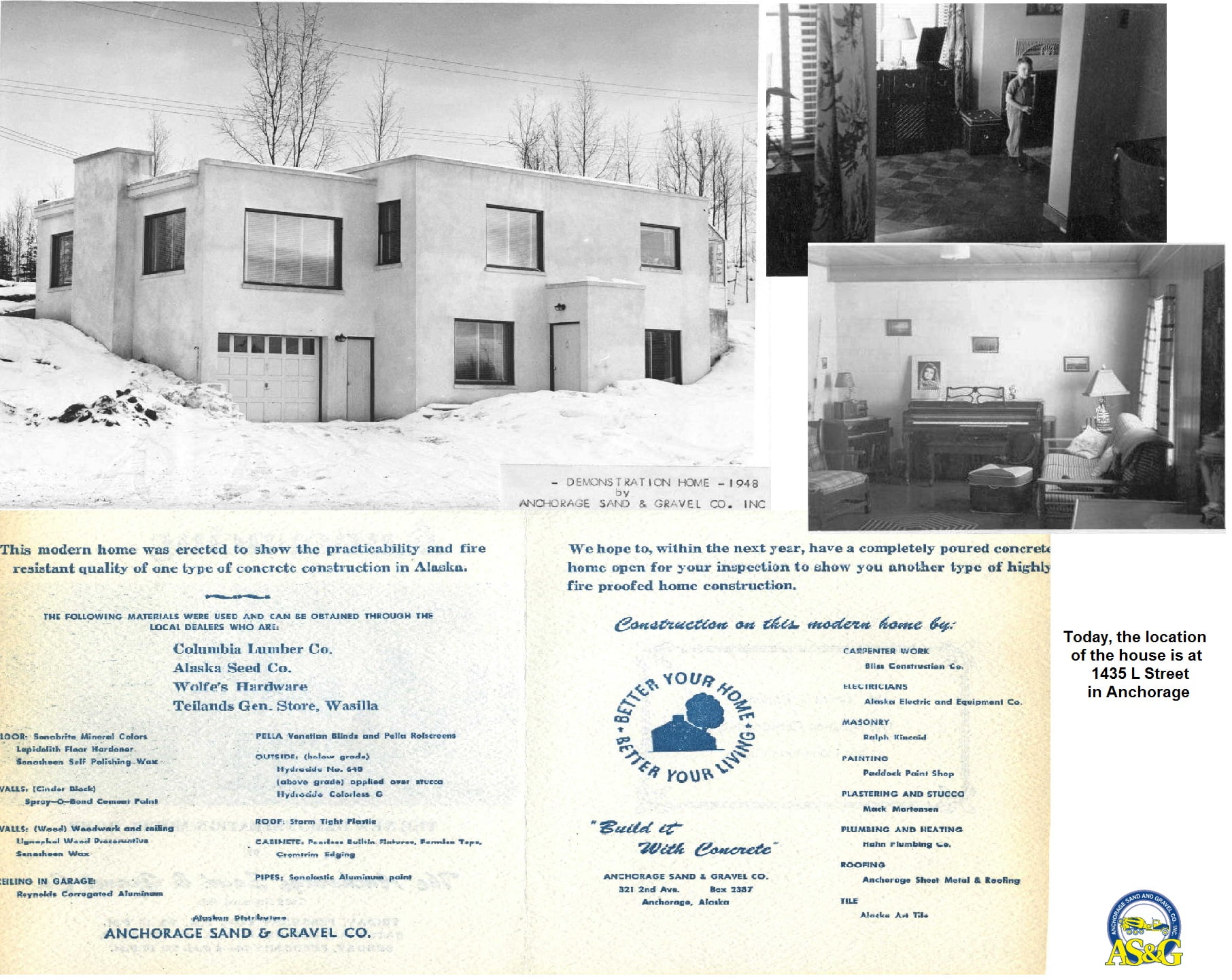
1952
Yes! Another New One
By 1951, Alaska’s population had risen to 138,000 with 51,000 people living in Anchorage. The first traffic lights were installed on 4th Avenue in 1949; the McKinley apartments were being built; and the Seward Highway & the Anchorage International Airport opened in 1951.At AS&G, a new concrete plant with block plant is under construction and Christmas is celebrated with the whole family.
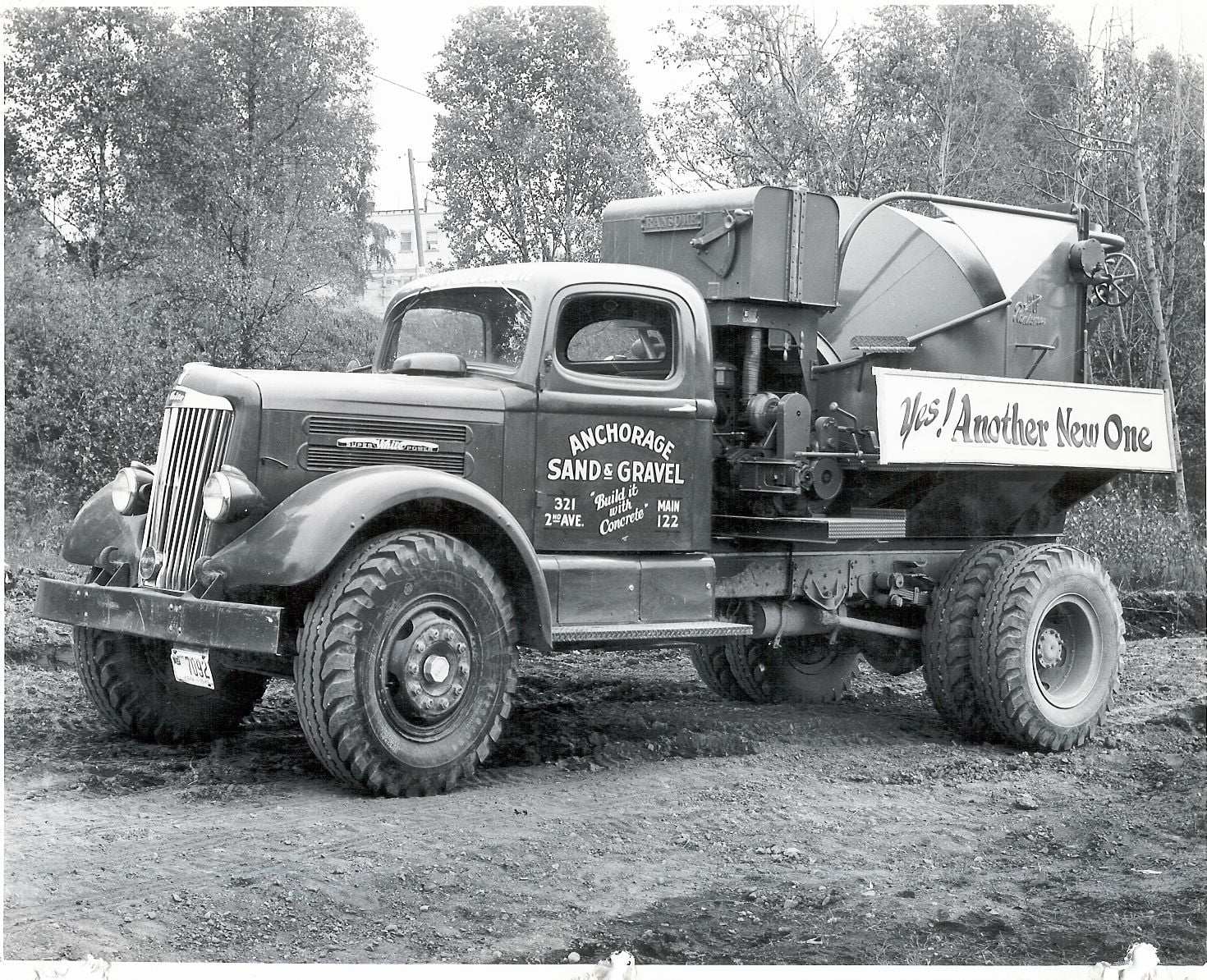
1953
Ready for Business
AS&G celebrated the completion of the ready-mix and block plant with an Open House. All operations including the offices are now under one roof.Also happening in 1953: The first Alaskan television broadcast by KENI Anchorage and Mount Spurr erupted for the first time.
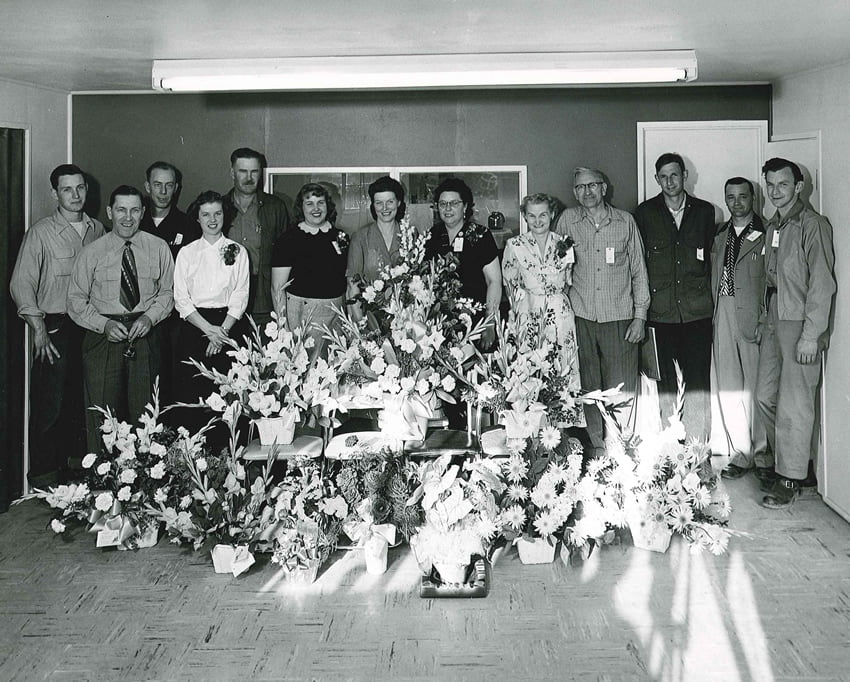
1959
Statehood
In 1956, Alaska’s constitution was adopted in; oil at the Swanson River on the Kenai peninsula (Cook Inlet) was discovered in 1957; and on January 3, 1959, Alaska officially became the 49th state of the Union.AS&G expanded their market into pre-stressed concrete, the new mixer trucks are now radio-dispatched and the new sales office and show room is occupied. There is much to celebrate this Christmas in 1959!
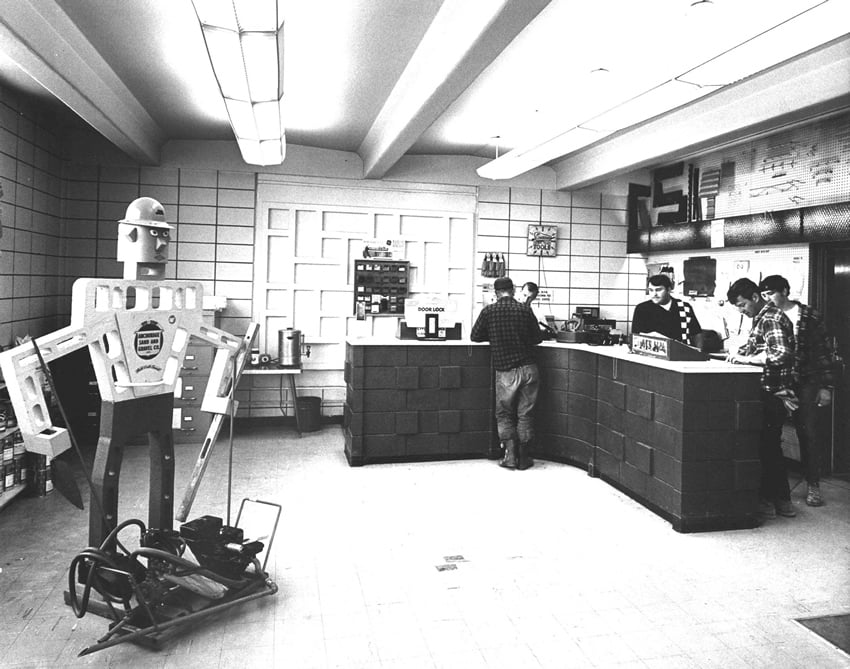
1964
Then, there was March 27
The Good Friday Earthquake measuring 9.2 on the Richter scale lasted nearly three (long) minutes. With AS&G located on Second Avenue, it brought significant destruction to the operations.The batch plant and a quarter of the block in the yard were damaged; the 7,000 bbl cement silo fell onto the boiler house and the cement elevator fell onto the warehouse roof, collapsing the building. However, the block plant – built of concrete block and prestressed concrete roof – was undamaged.
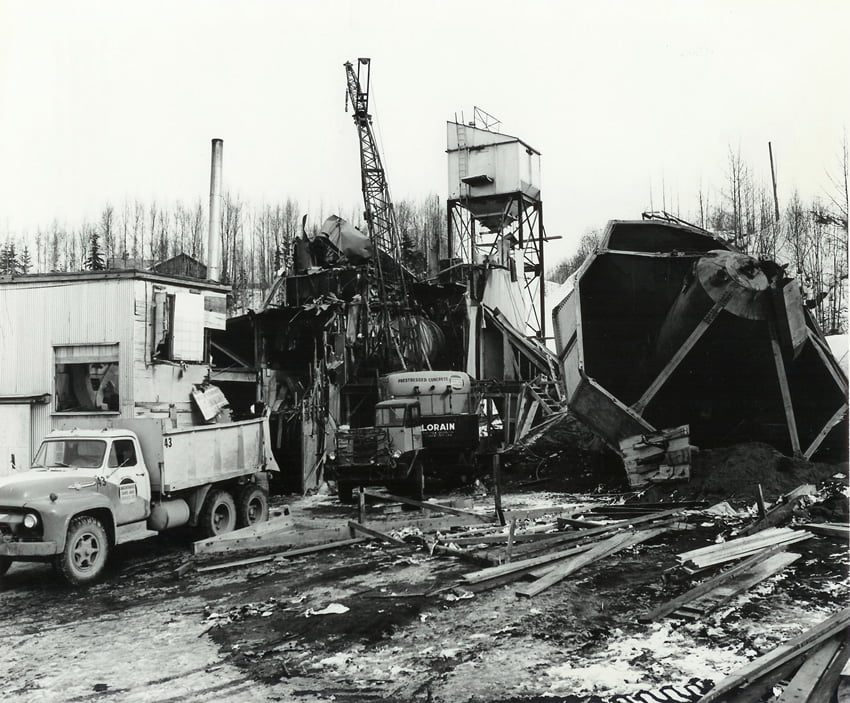
Rebuilding
One month later in 1964, a new portable batch plant was in operation, Vice President Jack F. Harris (left) and Superintendent A. L. “Bill” Waldron inspecting the new installation.In August, the first fully automated concrete mixing plant in Alaska was put into operation with a formal Opening Ceremony and AS&G’s creative advertising brings a smile to any advertiser’s face.Despite the tumultuous year, another Happy Christmas is celebrated.
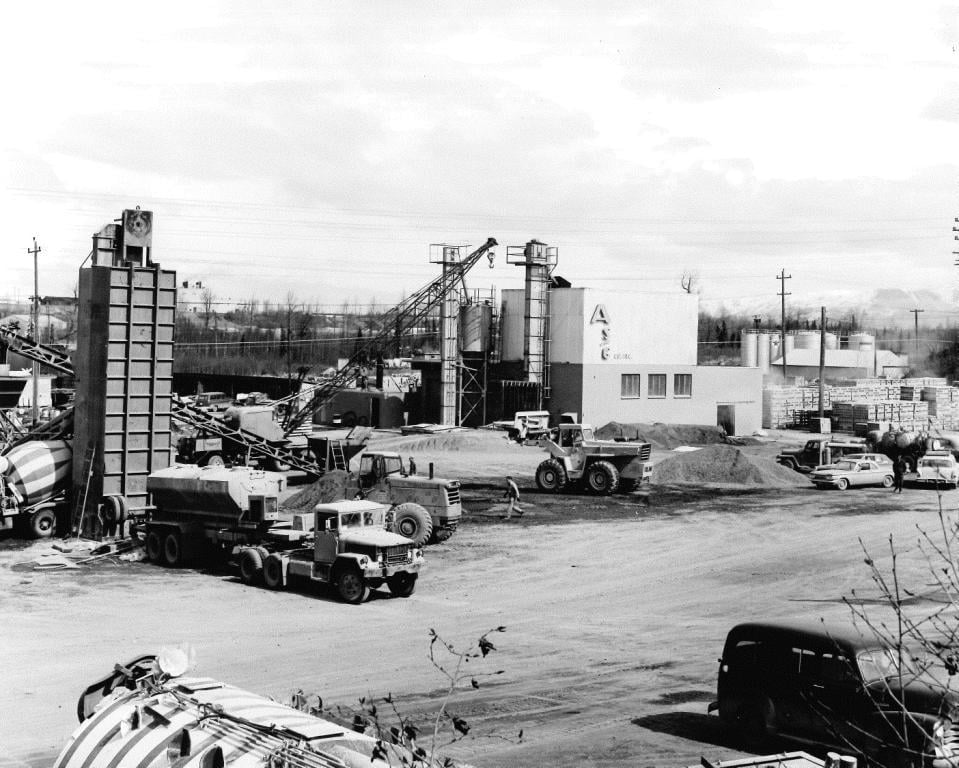
1965
New Beginning
AS&G mined several areas in Anchorage, for example where the Northway Mall now stands, and went into different markets: kitchen cabinets, roofing.However, by the end of 1964, the Waldron family had sold Anchorage Sand & Gravel to an investment group.Herb Lang was named managing partner, later becoming president.A new chapter in the company’s history had just begun…
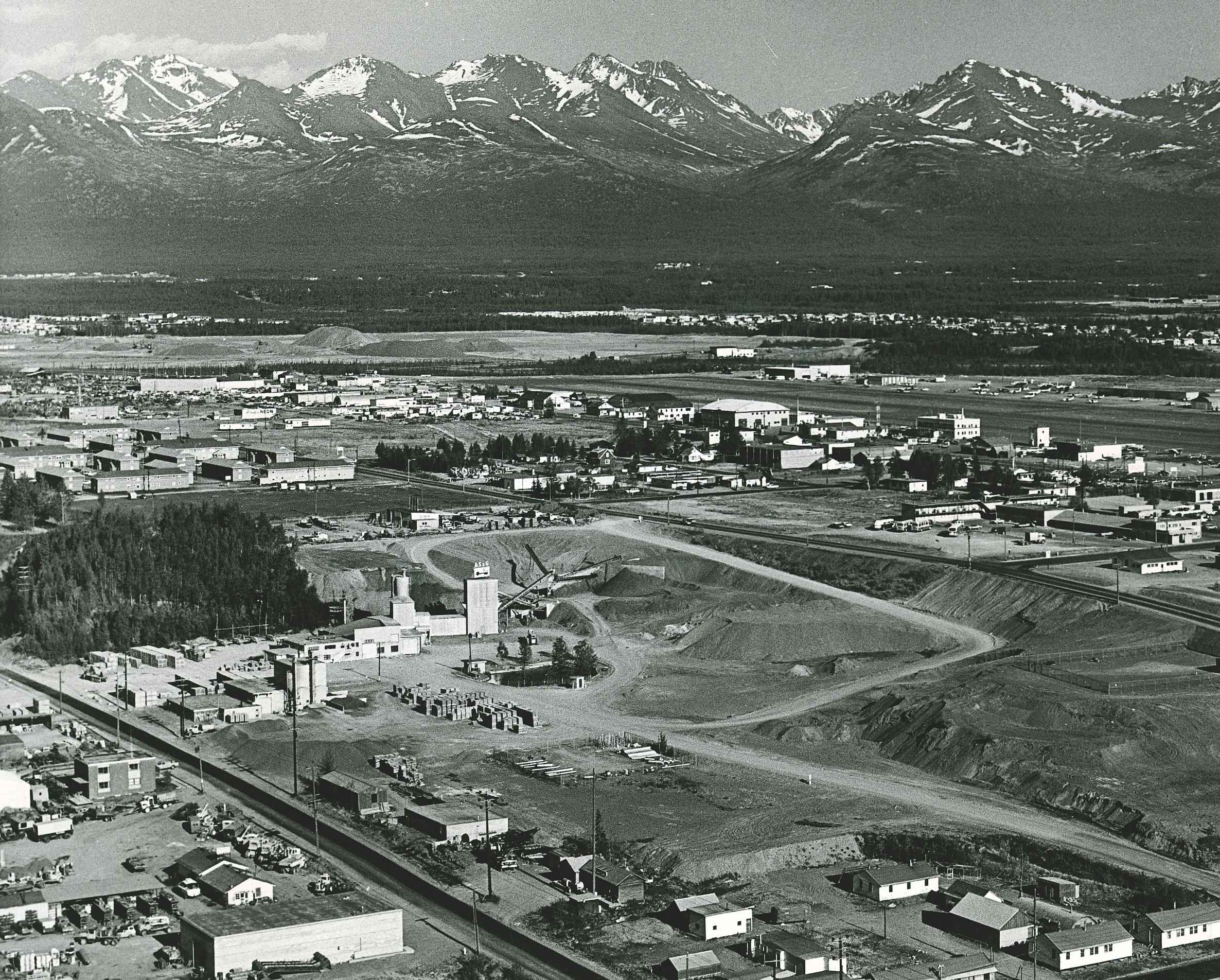
1969
Business Is Good
In 1968, the largest oil discovery in North America at Prudhoe Bay on the North Slope set off a lease sale of more than $900 million. Also in 1968, Kincaid park was created from a former Nike missile site and Alaska saw the first live satellite telecast in 1969.AS&G delivers concrete to Merrill Field with their lineup of concrete trucks spotting the famous yellow & blue design; and the block plant stocks up the yard with concrete block.
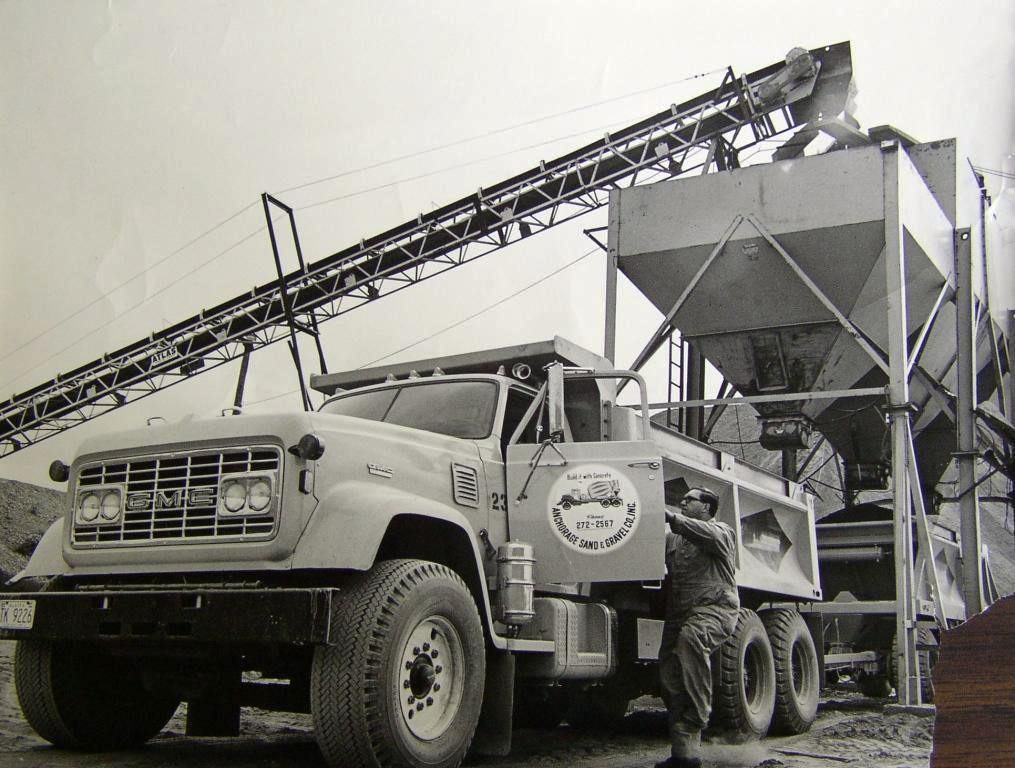
1970
Di-Fab, Precon & Apex
By the early 1970s, AS&G operated its rebar division, Dimond Fabricators, on East 88th Avenue, and opened the Pre-Con and Apex Concrete divisions at the same location in 1970. AS&G added Symons Forms and Weldorado Architectural Stones to the product line.1971 was not only a busy season at Pre-Con; with AS&G supplying pre-cast pipes, wall panels, concrete, Symons forms, and curing agents for the construction of the new Greater Anchorage Area Borough Sewage Treatment Plant at Point Woronzof.
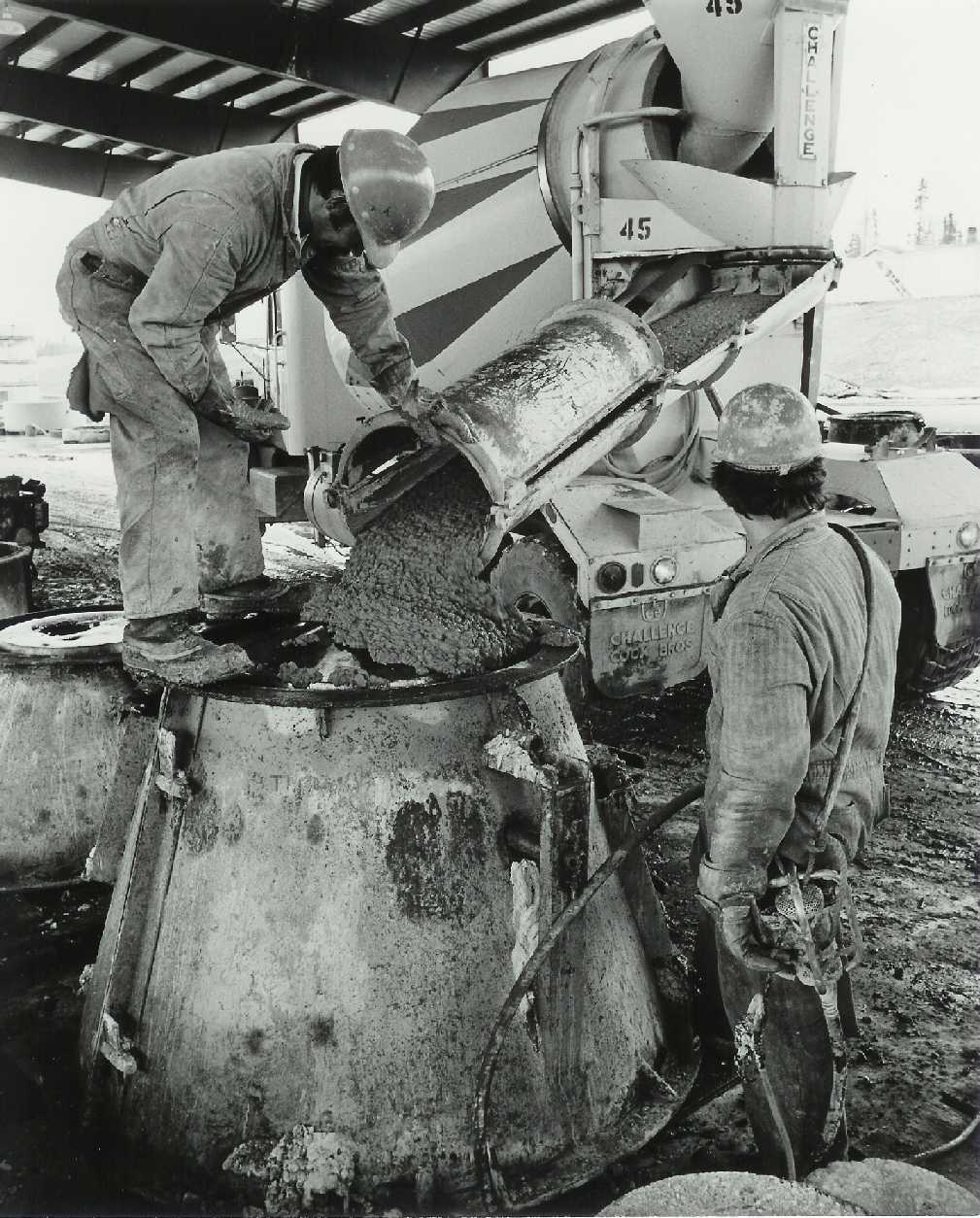
1971
Grand Opening
With the Grand Opening of the first permanent gravel processing facility on Lake Otis & 88th Avenue in 1971, AS&G becomes the largest gravel producer in Alaska. The plant had a capacity of 400 to 500 tons per hour. Material was brought in from five gravel pit locations in Anchorage: First Avenue, Lake Otis, Sand Lake, Klatt Road and East Klatt Road.Bob Park was General Manager and if you needed any material, you’d call the “Chief Pebble Peddler”, Earl Polen. We are deeply saddened to have lost our friend and coworker Earl far too early in 2016; he worked for AS&G for 44 years and is truly missed.
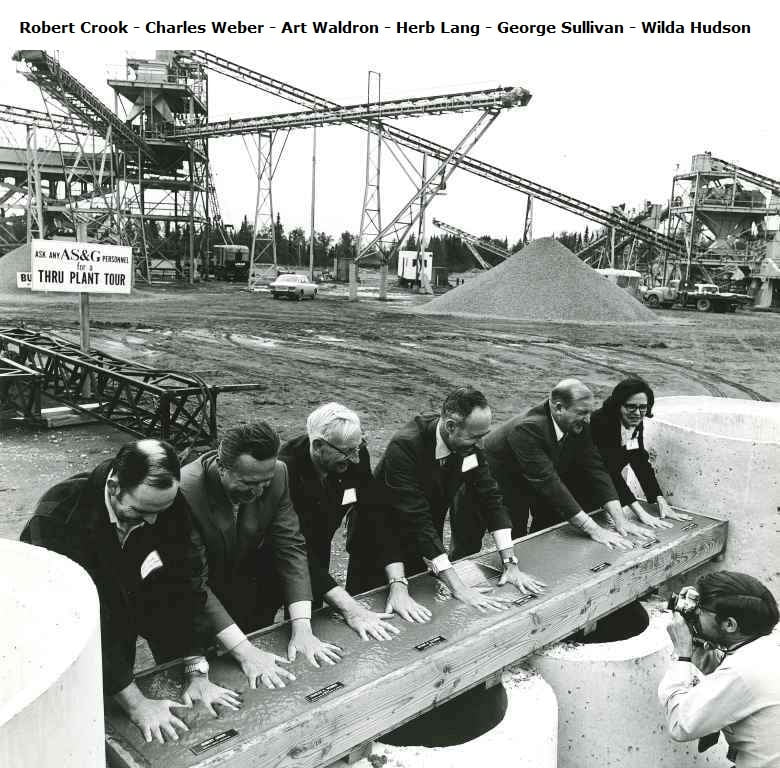
1974
Big Concrete Pour
In 1974, AS&G supplied one of its biggest concrete pours, approximately 2,000 cubic yards, for the construction of the second tower of the hotel Captain CookAlaska was booming in 1975; thousands of jobs were created with the construction of the Trans-Alaska Pipeline from the North Slope to Valdez.The city and borough consolidated into the Municipality of Anchorage including Eagle River, Eklutna, Girdwood and Glen Alps; and the 4,000 acre Bicentennial Park was created.

1976
Gravel From The Valley
In 1976, voters pick Willow as the new capital site (which was repealed later); and the Alaska Permanent Fund was established.As gravel pits in the Anchorage bowl were rapidly exhausted, AS&G was looking for new gravel resources, and the 500 acres Palmer Pit, 45 miles north of Anchorage, was established. After committing over $4 million, the first ongoing gravel hauling operation in the North was successfully operating, capable of moving over one million tons in a six month season.
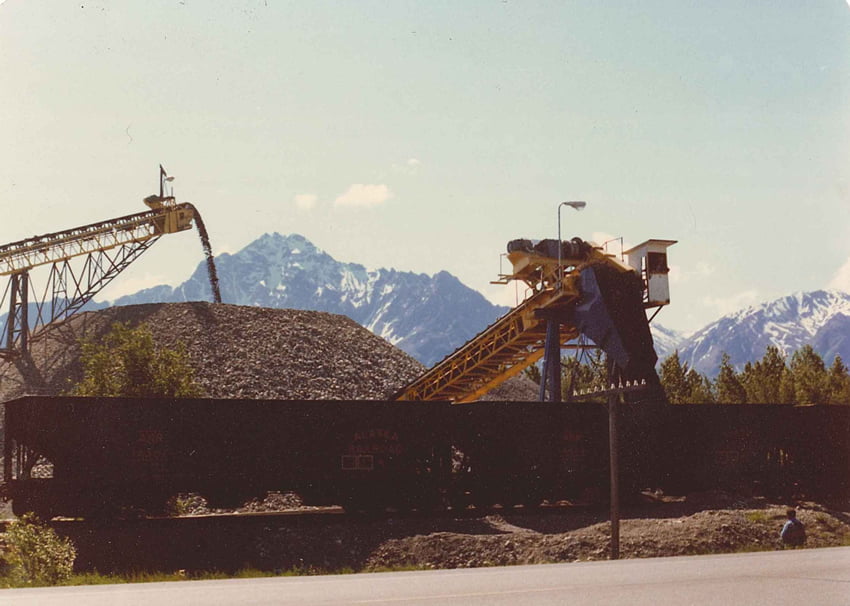
1978
6 mi South of Anchorage
Construction was booming in the late 1970s: the Sullivan Arena, Egan Center, Alaska Center for the Performing Arts were built, the Museum was expanded and 122 miles of bike trails were paved and the first oil reached Valdez through the pipeline on June 20, 1977.With the need for more construction materials, AS&G broke ground on a new $1 mio Unloading Facility “6 miles south of Anchorage” on Klatt Road in 1978 and gravel processing was moved to Klatt Pit in 1979. AS&G operated two fully computerized batch plants; radio-dispatched mixer trucks supplied 22,000 cubic yards of design mix to the new U.S. Federal Building.
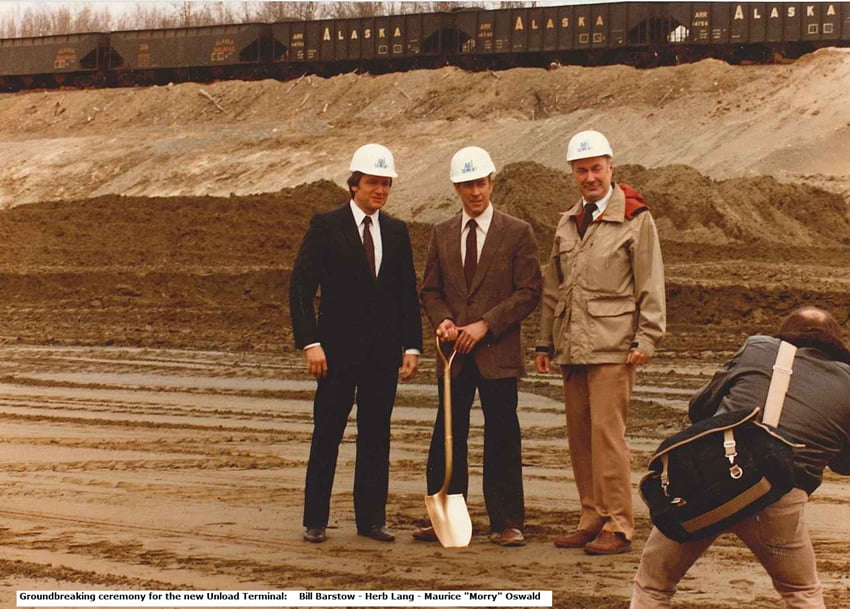
1982
Clinker from Japan
Anchorage’s population increased to 175,000 in 1980 and the city banned mining within city limits. The first $1,000 share of the PFD was distributed in 1982 just in time to ease the ongoing recession a little bit.The first shipment of clinker from Japan arrived at the Port while the new South Cement Terminal and Ball Mill for grinding the imported clinker was still being built. The clinker was pushed back to the back of the Ball Bill building.
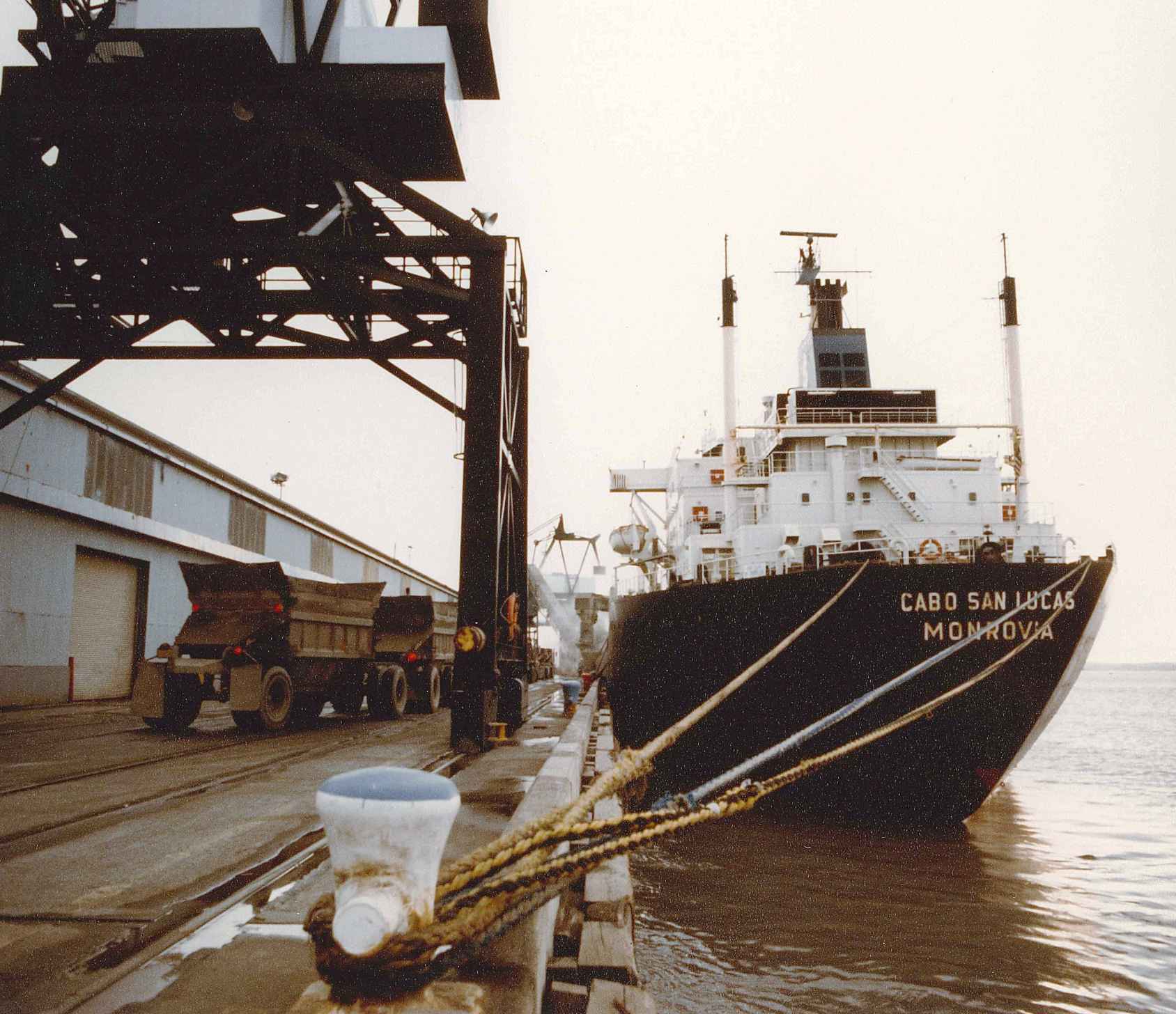
1983
45 Years in Service
“The Performance Company” has been in business for 45 years and AS&G takes pride in the fact that the average length of employment is more than 10 years.The company-owned railroad cars carry pit run daily to the Klatt Road processing facility which is then automatically crushed to 4″ minus. A network of conveyors move the aggregate through screening, crushing and washing into various stockpiles. AS&G’s computerized asphalt plant can produce 500 tph.Design-strength concrete is produced at two concrete plants; the in-house Quality Control division assures customers a continuous unvaried standard. The company also keeps 160 different types of concrete block in stock, manufactured in the state-of-the-art Block Plant on Klatt Road.Dimond Fabricators is the largest rebar fabricator in the state, operating an automatic shearline and two digital benders. The Building Materials division carries premium product lines as well as scaffolding and Symons forms.

1985
Into The Interior
In 1985, Alaska Basic Industries’ northernmost office in Fairbanks begins operating with ready-mix, sand, gravel, cement and building Materials. Bob Ballow, president of AS&G, sees the Fairbanks office growing to eventually offer the same full line of services and products customers find at AS&G.In 1988, Anchorage loses its bid to host the 1994 Olympic Winter Games to Lillehammer, Norway.AS&G ventured into another line of business: Alaska Soil Recycling (ASR) began operating at the asphalt plant, remediating contaminated soils.
1987
Ups & Downs
The economic crisis in 1987 hits Anchorage hard, causing job losses, foreclosures and bankruptcies; many people leave. Herb Lang acquired the Office building from the bankrupt Alaska Mutual Bank in 1989. Also happened in March of 1989: Oil tanker “Exxon Valdez” spills more than 11 million gallons of crude oil into Prince William Sound, the second largest oil spill in the U.S. history.However, it’s the people who make a company – driving an AS&G truck runs in the Gardner family. Even in 2016, Joshua Gardner, Bobby’s son, is continuing the family’s tradition.
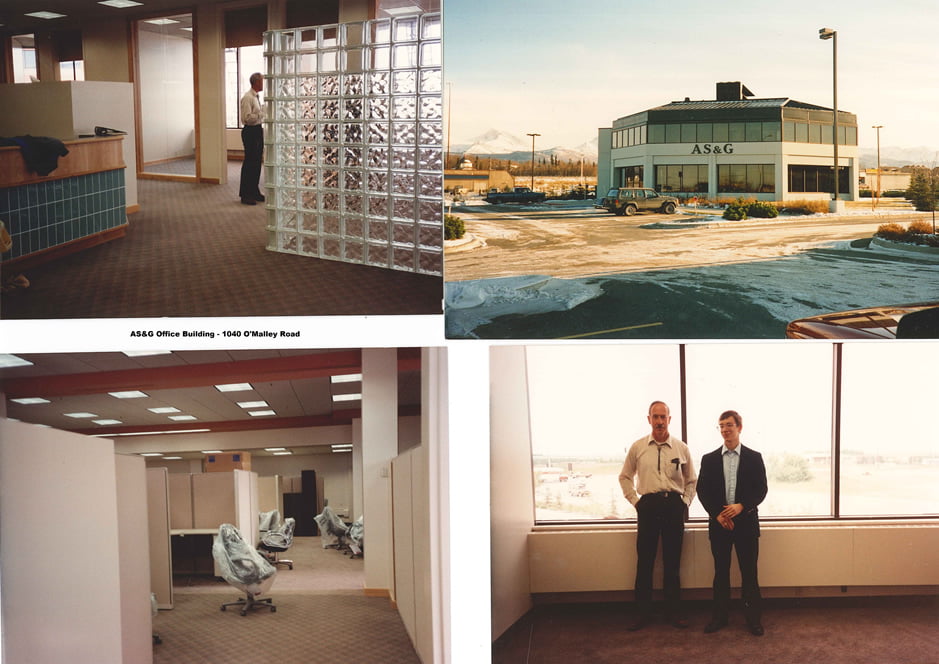
1991
Hard Hat Herb
In the fall of 1990, the AS&G Sales Counter and Warehouse opened on Highland Road in South Anchorage. And with the increased need to clean contaminated soils, ASR bought a separate plant in 1991 and began operating on Spar Avenue.At the end of 1991, Herb Lang received the much coveted Associated General Contractor’s Hardhat award, the highest honor an AGC member can receive. To win, one must exhibit a commitment to the highest ethical and professional standards. It is only conferred upon those individuals who have made a significant mark upon the Alaska construction industry.
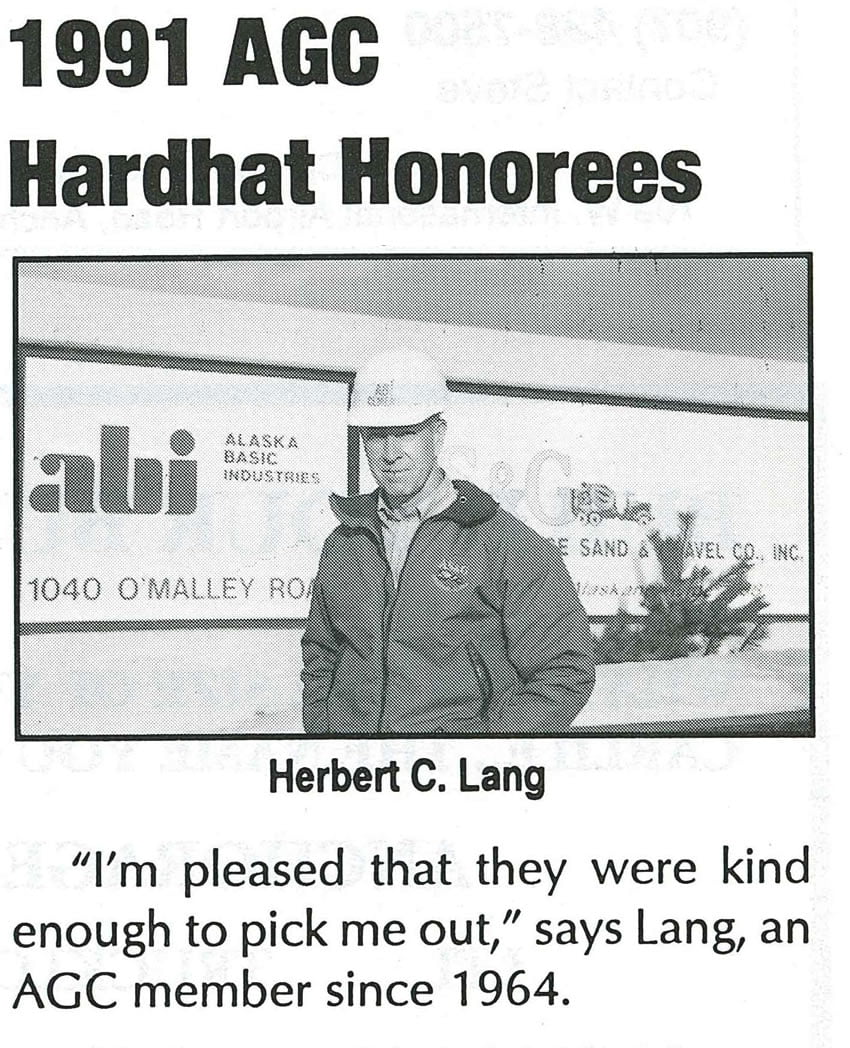
1992
A New Family
In 1992, Herbert Lang & Partners sold their flourishing company to the MDU Resources Group in Bismarck, North Dakota; parent company to Knife River Corporation, the construction materials and contracting division of the group.Dale Morman was named president. He moved his family to Anchorage and started his journey to continue the company’s successful story.By now, the city’s population had risen to 228,000 people; who were in for a surprise when Mount Spurr, 80 miles to the west, erupted several times covering the city in ash. Earlier in 1991, Congress closed the Arctic National Wildlife Refuge to any oil development.
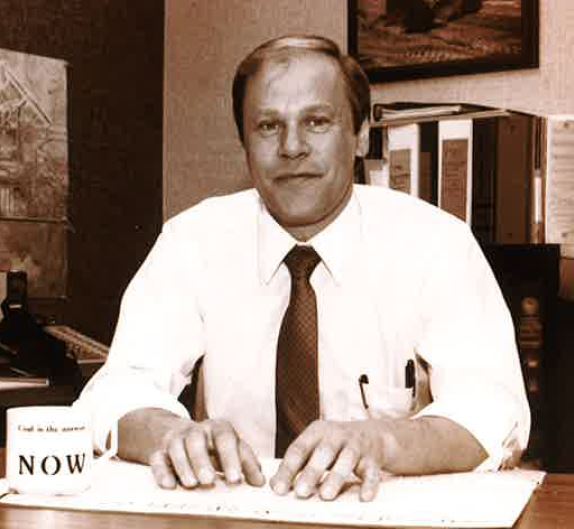
1998
60 Years Serving Alaska
In the late 1990s, AS&G acquired Davis Block and Clean Soils to expand their service to the market. Another concrete ready-mix record was set in 1999: 4,000 cubic yards were poured with Kiewit for the construction of the new Marriott Hotel downtown.That same year, the Alaska Native Heritage Center opened, expecting 130,000 visitors a year.
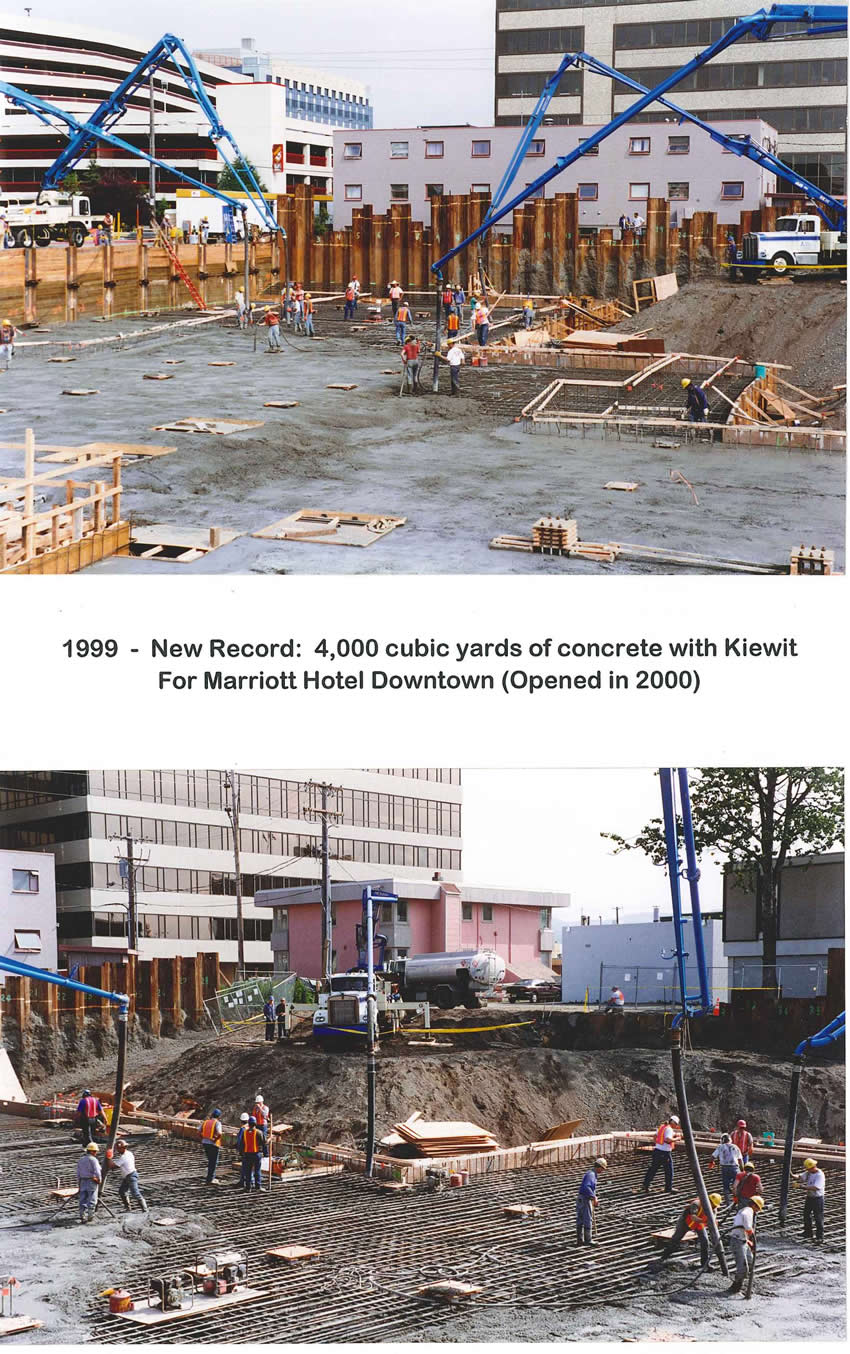
2003
Pre-Cast Concrete Co.
Pre-Cast Concrete, which was established by John McGee, became the latest member of the AS&G family in 2000. A new property on Lang Street was acquired and the new pre-cast shop was built in 2003.The statewide population rose to 627,000, an increase of 14% from 1990, with 260,000 people living in Anchorage. And snow slides on the Seward Highway stranded dozens of people in Girdwood for nearly a week in the winter of 2000.
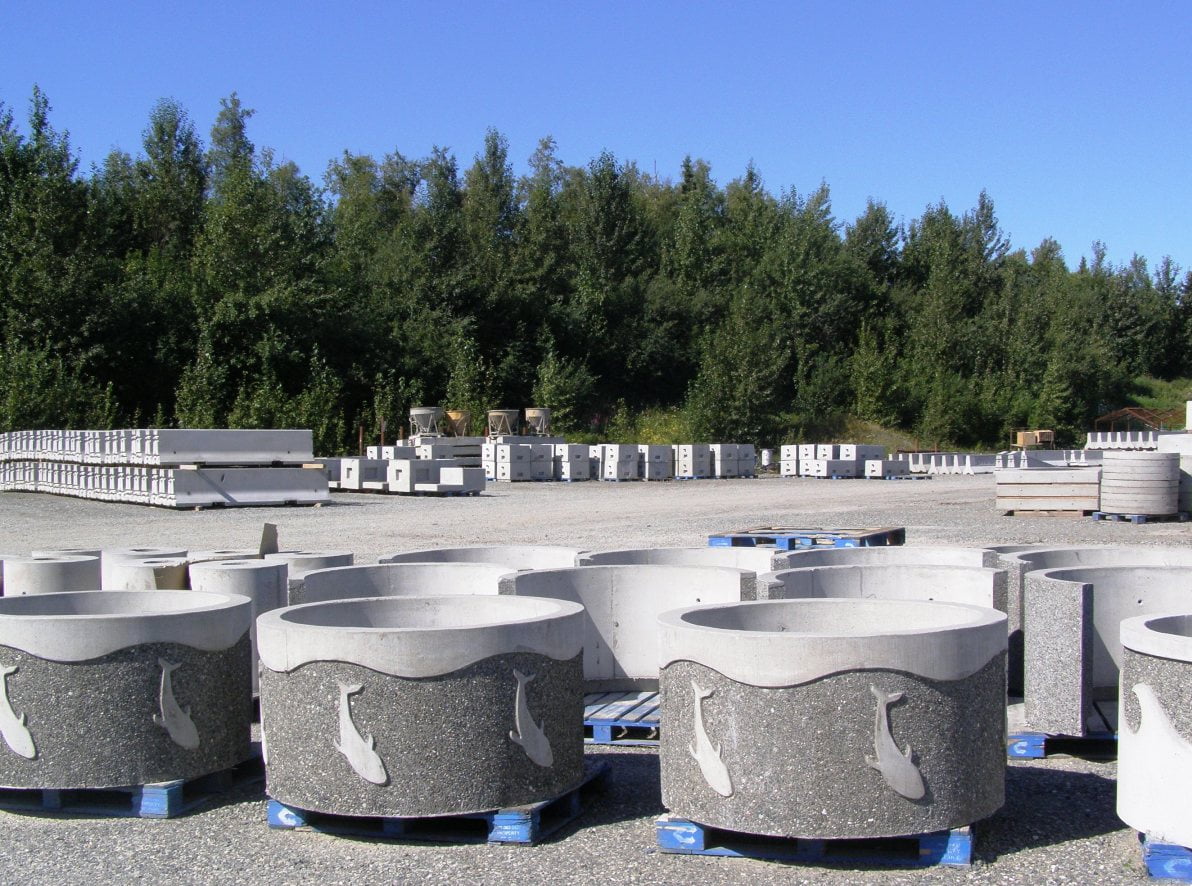
2005
Opportunity Knocks
In 2005, Alaska Basic Industries purchased Fairbanks Precasters in North Pole, the largest concrete precaster in the Fairbanks market which then started to operate under a new name: Fairbanks Precast & Rebar. FPR produces a variety of standard and custom made precast concrete products as well as operates a rebar division.ABI expanded further into the Fairbanks market when Fairbanks Block & Building Materials, located at 855 Old Richardson Highway, was acquired in 2008. FBBM is producing block and sacked goods as well as carrying a large variety of building materials products.All Fairbanks divisions are operating under the newly established.
2008
Through The Recession
In 2008, Anchorage’s population had risen to 280,000 people. Despite the recession, construction was still alive with the building of the Denai’ina Convention Center and the E & F Street intersection being redone. This was the first road project and the first non-residential concrete intersection in Alaska using interlocking pavers, supplied by AS&G in a variety of colors.AS&G also maintained a presence at the local hockey rink, sponsoring the Alaska Aces for the 5th year.In the same year, a new radial stacker was installed at the Unload Terminal after the old one reached its end of life in a more or less dramatically fashion.
2013
Bleacher Report
2013 saw Concrete Ready-Mix pouring slabs and the Pre-Cast division producing bleacher sections (a first for Precast) for the new 5,000 seat multi-purpose Alaska Airlines Center at the University of Alaska, Anchorage.Also in 2013: Forbes named Anchorage one of the Best Places for Business and Careers; and Cabela’s made for some happy people with the opening of their first store in Alaska.Earlier in 2012, new screens, a tower and a new 190 ft telestacker were installed at the crushing plant to increase efficiency. It took a whole crew to put all the bits and pieces, from conveyers, chutes, engineering, to electrical and plumbing in their proper places.
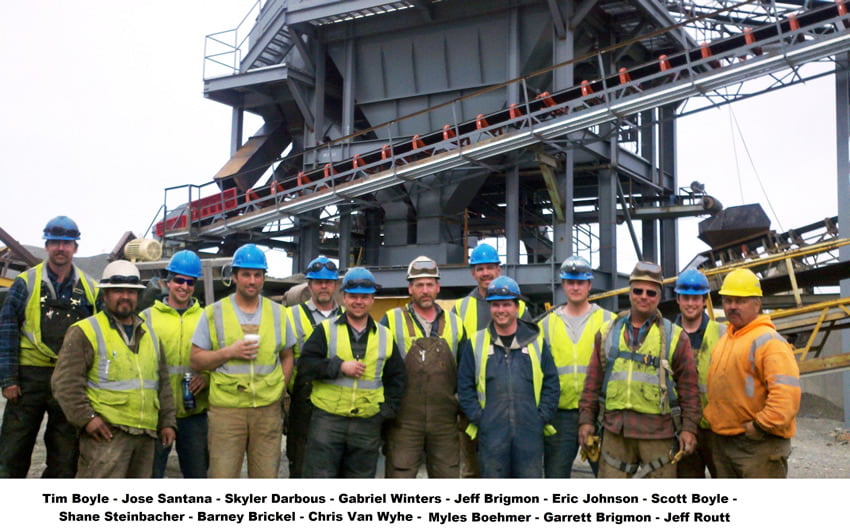
2015
Across The Bering Sea
In 2015, Pre-Cast Concrete Co. was the first and only company in Alaska to become a NPCA Certified Plant. PCC produced and shipped 917 electrical trenches to Sakhalin Island, Russia for the world’s longest extended reach drill. This project for ExxonMobil required more than 8,500 cubic yards of concrete and 990 tons of rebar.At the Port of Anchorage, the new Dome was put into commission. 86 feet high with a diameter of 162 feet, this storage facility can hold 40,000 short tons of cement and will increase ABI’s ability to better serve the Alaska market.In other news: Alaska’s population rose to more than 735,000 with 300,000 people residing in Anchorage and – Moose’s Tooth was ranked 3rd best pizzeria in the whole USA!Earlier in 2014, the Alaska Railroad required concrete ready-mix for a bridge repair, so mixer truck 474 was loaded onto a railcar in Indian and then carried further south along Turnagain Arm.
